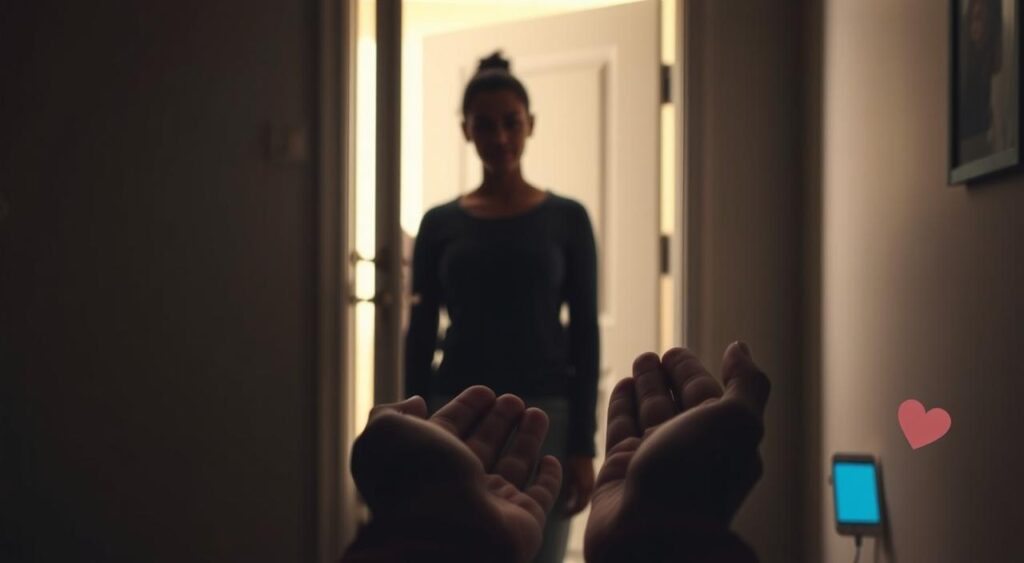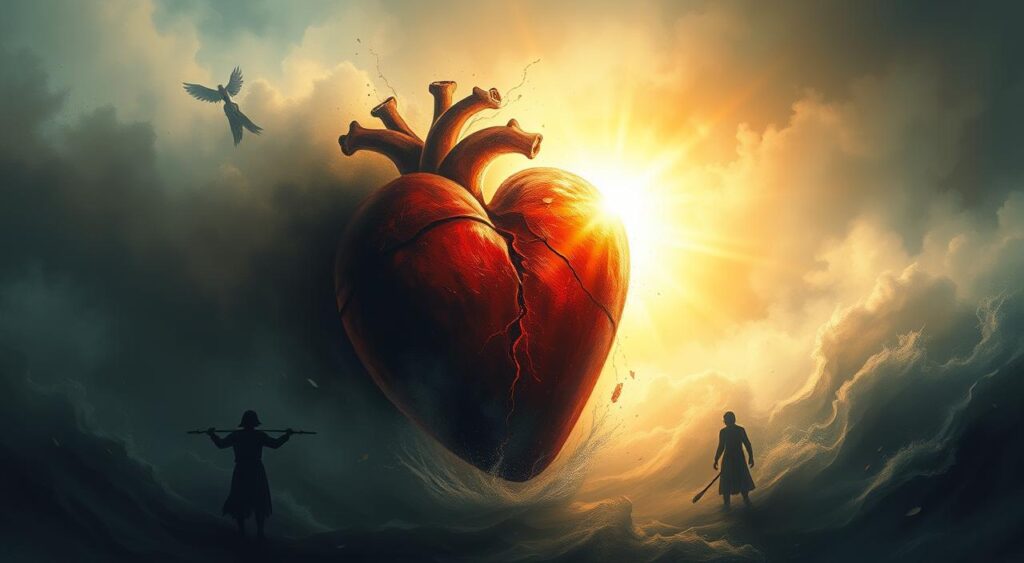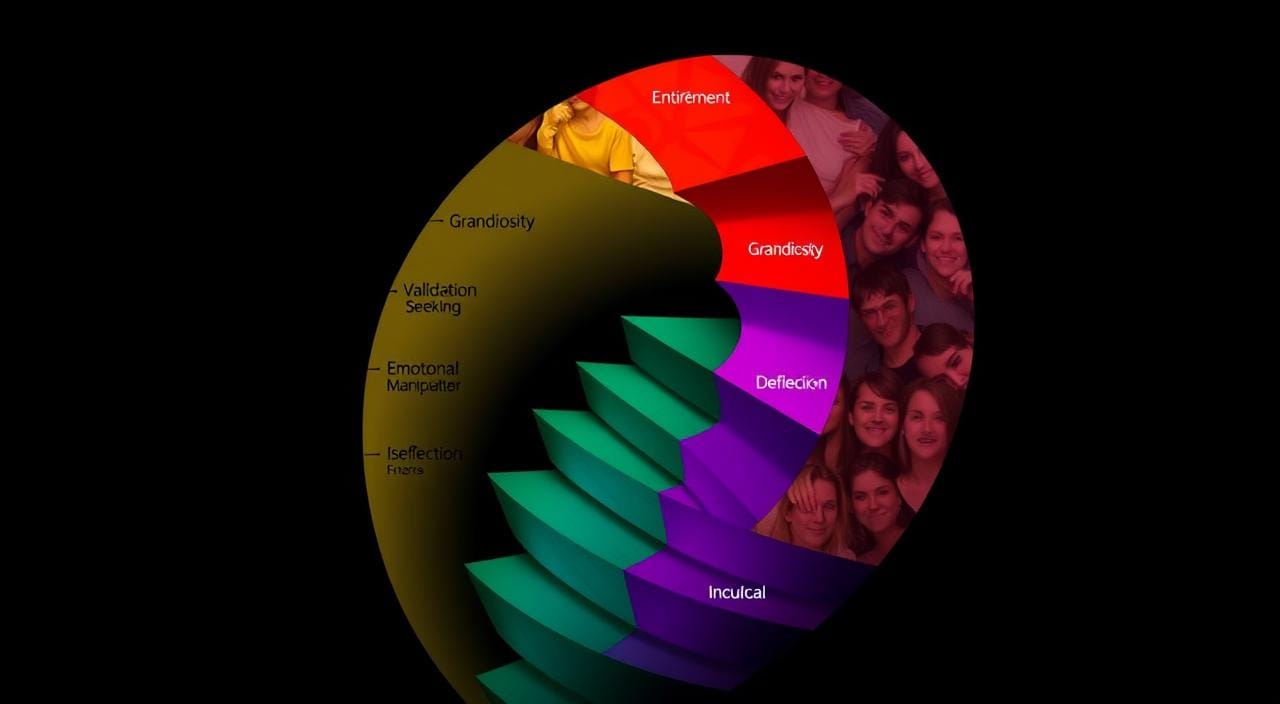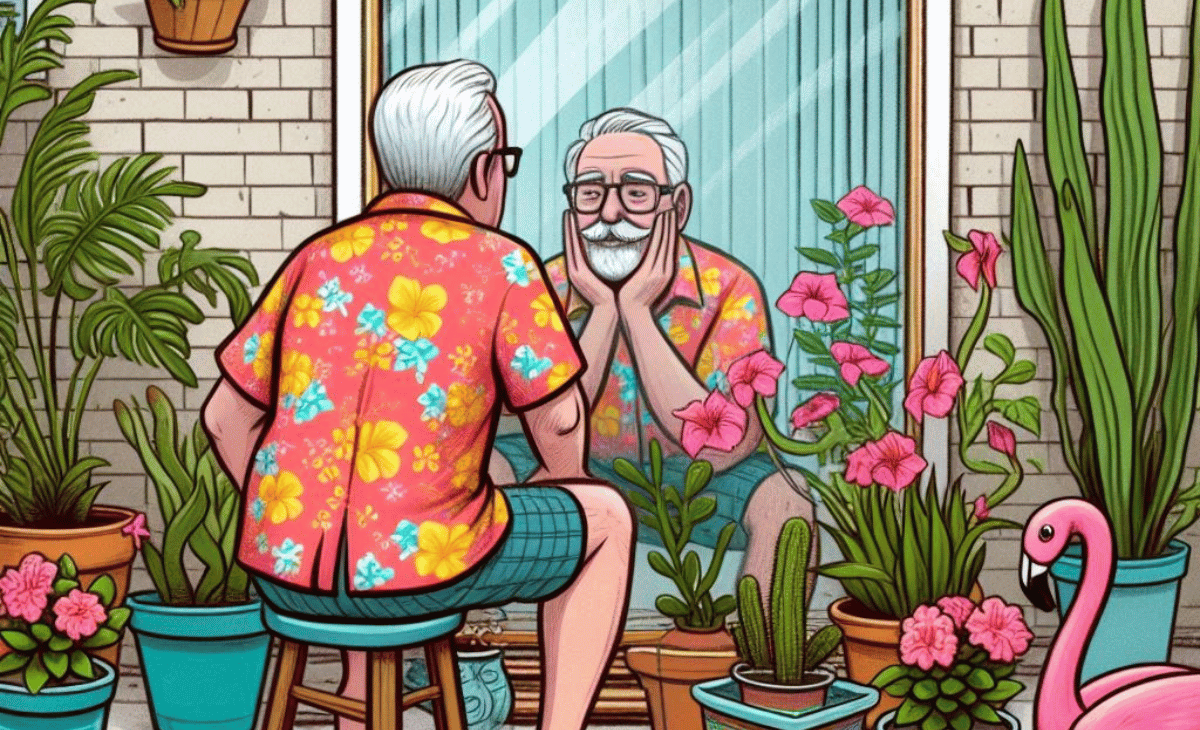Domestic abuse, also known as “domestic violence” or “intimate partner violence,” is a way to control someone close to you. It involves physical, sexual, emotional, economic, or psychological actions or threats1. These actions are meant to scare, intimidate, manipulate, hurt, humiliate, or wound someone1. Let’s dive into what is domestic assault?
Anyone can be a victim of domestic assault, no matter their race, age, sexual orientation, religion, or gender1. It can happen in many relationships, like between married couples, partners living together, or those who are dating1. Domestic violence doesn’t pick on anyone based on their social class or how much they know1.
Key Takeaways
- Domestic abuse can happen to anyone, regardless of their background or identity.
- Domestic violence is a pattern of abusive behavior used to gain power and control over an intimate partner.
- Domestic assault can take many forms, including physical, sexual, emotional, economic, and psychological abuse.
- Incidents of domestic abuse are rarely isolated and often escalate in frequency and severity.
- Domestic violence affects people from all socioeconomic and educational backgrounds.
Introduction to Domestic Assault
Definition and Types of Domestic Abuse
Domestic abuse is a way to control someone by being abusive. It can be physical, sexual, emotional, economic, psychological, or even through technology2. This abuse often gets worse and can lead to serious harm or even death2.
It’s important to know the signs of domestic abuse. Abuse can look like making someone feel bad in front of others, putting them down, or making them feel trapped. It can also mean being mean, controlling, or using excuses to be abusive2.
| Type of Domestic Abuse | Description |
|---|---|
| Physical Abuse | Hitting, slapping, pushing, kicking, or any other physical violence |
| Sexual Abuse | Forced or unwanted sexual activity, including rape, incest, and sexual exploitation |
| Emotional Abuse | Verbal threats, humiliation, isolation, and other psychological tactics to control or manipulate the victim |
| Financial Abuse | Restricting access to money, assets, or other financial resources to maintain power and control |
Knowing what domestic assault is and its different forms helps us tackle this big issue. It also helps support those who are going through it3.
“Domestic violence is predominantly experienced by women and tends to be more severe for women compared to men.” – World Health Organization3
Domestic Assault: A Pattern of Abusive Behavior
Domestic abuse is a pattern of behavior where one partner controls the other in a relationship. This can happen in dating or family settings. The abuser uses power and control over the victim4. Women are often hurt more in these situations, with a rate six times higher than men4.
Worldwide, 10-50% of women have been hit or physically attacked by a partner4. In the U.S., it’s estimated that one-third of all women face domestic violence at some point, with four million women assaulted yearly4.
The Power & Control wheel shows how abusers use different behaviors to control their partners5. Domestic violence can happen to anyone, no matter their gender, age, or background5. Men can also be victims, facing verbal and emotional abuse5.
- Abuse can include many types like emotional, psychological, financial, and tech abuse5.
- If a partner has hurt someone once, they might keep hurting them5.
- Emotional abuse can hurt as much as physical abuse, affecting self-esteem and freedom5.
- Abusers often control money or deny basic needs as a way to control5.
- They use tactics like dominance, humiliation, and threats to gain control5.
Domestic violence touches every community, no matter the background of the people6. It includes physical, sexual, psychological, and emotional abuse6. Even after leaving an abusive relationship, victims may still face threats and control from their ex6.
In the U.S., 70% of injuries from domestic violence happen after the couple separates4. Sadly, 1 in 5 homicide victims with restraining orders are killed within two days of getting the order6. And 1 in 3 are killed in the first month after trying to leave6.
| Statistic | Value |
|---|---|
| Injury rate for women in domestic violence cases | 6 times higher than for men |
| Worldwide, women reporting physical assault by intimate partner | 10-50% |
| Women victims of domestic violence during lifetime | Up to one-third |
| Women assaulted by domestic partners each year | 4 million |
| Reported partner abuse in 2008-2009 (18-59 years old) | Women: 1 in 4, Men: 1 in 8 |
| Older couples reporting physical violence in past year | 5.6% |
| Reported injuries from domestic violence after separation | 70% |
| Homicide victims with restraining orders murdered within 2 days | 1 in 5 |
| Homicide victims with restraining orders murdered within 1 month | 1 in 3 |
Domestic abuse and its cycle have big effects on victims, their kids, and society. Understanding how abusers use power and control is key to tackling this issue. It helps in supporting those affected and finding ways to stop it.
Signs of an Abusive Relationship
Domestic violence can be hidden in many ways. It’s key to spot the quiet signs that show an abusive relationship. Emotional and psychological abuse are sneaky and often missed. They can really hurt a person’s self-esteem and happiness.
Recognizing Emotional and Psychological Abuse
Emotional abuse means always being put down, called mean names, or being cut off from friends and family7. Psychological abuse makes someone live in fear, threatens to hurt them, or makes them feel alone8.
- Extreme Jealousy: The abuser might call or visit without saying they’re coming8.
- Controlling Behavior: They could check your phone or email8.
- Quick Involvement: They rush into wanting a serious commitment, saying “Love at first sight.”8
- Unrealistic Expectations: They want their partner to be perfect and always meet their needs8.
- Isolation: They try to keep you away from friends and family8.
- Blames Others: They always blame others (usually you) for things8.
- Hypersensitivity: They get easily upset and see everything as a personal attack8.
- Cruelty to Animals or Children: They don’t care about animal or child pain, or have unfair expectations of them8.
- “Playful” Use of Force of Sex: They push for sex when you’re not up for it or when you’re sick8.
- Verbal Abuse: They say mean and harmful things, put you down, and call you names8.
- Dr. Jeckyl and Mr. Hyde: They switch from being nice to being very angry quickly8.
- Past History of Battering: They have a history of hurting past partners8.
- Use of Violence and Threats of Violence: They use force or threats to control you8.
Domestic abuse can happen to anyone, no matter their background or status9. By spotting emotional and psychological abuse, we can help victims get the support they need to escape violence.
If you or someone you know is being abused, call the National Domestic Violence Hotline at 1-800-799-7233 for help9. Remember, you’re not alone, and there is help out there.
Forms of Domestic Violence
Physical, Sexual, and Financial Abuse
Domestic violence comes in many forms, each harming victims deeply. Physical abuse includes hitting, slapping, and punching. It can also mean burning, strangling, or using weapons. These actions can cause serious injuries and trauma10.
Sexual abuse is forcing someone to do sexual acts they don’t want to do. It also means making someone have sex without protection or even trafficking them10. Victims feel violated, ashamed, and lose control over their bodies.
Financial abuse is a sneaky kind of violence. Abusers control by limiting money access, not giving money, or hurting the victim’s credit score10. This makes victims rely on their abusers and makes leaving hard.
| Type of Domestic Violence | Description |
|---|---|
| Physical Abuse | Hitting, slapping, punching, burning, strangulation, use of weapons |
| Sexual Abuse | Forcing unwanted sexual activities, coercing unprotected sex, human trafficking |
| Financial Abuse | Limiting access to financial resources, withholding money, affecting credit score |
Domestic violence is a big problem, affecting11 10 million people in the U.S. each year11. Knowing about the different types helps us tackle this serious issue.

“Domestic violence is not just about physical abuse. It’s about power and control.” – Unknown
Power and Control in Domestic Abuse
Physical and sexual assaults are clear signs of domestic abuse and violence12. But, other behaviors can also be part of a bigger abuse system12. Even if physical attacks are rare, they can make victims live in fear. This fear lets the abuser control the victim’s life and choices.
The power and control wheel shows how abusers use different tactics to dominate their partners12. These tactics include:
- Economic abuse: Taking control of money and limiting job chances12.
- Threats: Threatening the victim or their loved ones12.
- Intimidation: Scary looks, damaging property, or showing weapons12.
- Emotional abuse: Putting down the victim with insults and constant criticism12.
- Isolation: Cutting off the victim from friends and family12.
- Minimizing, denying, and blaming: Making light of the abuse and blaming the victim12.
- Using children: Using the victim’s children to control them12.
These behaviors together form a cycle of violence hard to escape12. Narcissistic abuse also involves manipulation and a lack of empathy, often through verbal abuse13.
Knowing how power and control work in domestic abuse helps us understand these complex situations better. It’s key for supporting victims and giving them the right help and resources1213.
Impact of Domestic Violence
Domestic violence affects not just the abused but also their families, friends, co-workers, and the wider community14. It brings about physical, emotional, and social challenges that can last a long time15.
Effects on Victims
Victims may suffer from physical injuries, from small bruises to serious wounds15. They also face emotional and psychological damage, leading to anxiety, depression, and PTSD15. This can lead to job loss, financial struggles, and feeling isolated.
Effects on Children
Children who see domestic violence are deeply hurt, feeling scared and learning bad lessons about relationships15. This can lead to social and health problems and make them more likely to be abused later14. The emotional damage from seeing violence can affect them for life.
Societal Impact
Domestic violence affects more than just the victims, it touches the whole community14. It puts a strain on police, courts, and social services, taking away resources from other important issues14. It also raises healthcare costs, reduces productivity, and brings other societal costs15.
We need to tackle domestic violence from many angles. This means helping victims, improving prevention, and building a society that values respect and peace. Understanding its effects helps us aim for a safer, fairer world for everyone1415.
Laws on domestic assault
Domestic assault is when one partner in a relationship uses abuse to control the other. This can be physical, sexual, emotional, economic, or psychological abuse16. It happens in both opposite-sex and same-sex relationships. The victims can be married, living together, dating, or share a child16.
Whether an assault is seen as domestic violence depends on the relationship between the people involved. This includes being related by blood, married, adopted, or having been in a romantic relationship before16. Domestic violence cases, especially those within family relationships, are often taken more seriously16.
Even though the laws for assault are the same, domestic violence cases might have different plea deals. Sometimes, they require a domestic violence program as part of probation16. Lawyers work hard to defend both domestic and non-domestic violence cases. They give legal advice and support, especially in family-related cases16.
| Domestic Assault Charges | Penalties |
|---|---|
| Domestic assault without bodily injury | Up to 11 months and 29 days in jail, fines up to $2,50017 |
| Aggravated domestic assault (use of deadly weapon, serious bodily injury, or strangulation) | Up to 15 years in prison, fines up to $10,00017 |
| Strangulation during domestic assault (in Oklahoma) | Automatic felony charge, even in cases of attempted strangulation18 |
| Domestic assault and battery with a dangerous or deadly weapon (in Oklahoma) | Felony charges18 |
| Second domestic assault and battery offense (in Oklahoma) | Automatic felony charges, even if minor18 |
Not all domestic assaults are the same. Some are automatically charged as felonies, even if there are only slight injuries18. Even small injuries like scratches or pushing can lead to a felony charge, affecting legal outcomes and bail18.

Being accused of domestic violence can have serious effects. It’s important to get legal help quickly. This way, you can understand your rights, look at defense options, and try to lessen the impact of the charges17.
Legal Consequences of Domestic Assault
Domestic assault can lead to serious legal trouble, based on how bad the offense is. In many states, it’s split into levels. These levels depend on if there was injury, if a dangerous tool was used, and if the abuse was severe19. The penalties can be anything from a misdemeanor to a felony, with jail or prison time, fines, and more19.
State Laws and Penalties
In Florida, domestic violence crimes have strict jail terms, even for misdemeanors19. Domestic violence means any act that causes harm to a family member, like hitting, sexual assault, or stalking20.
- For misdemeanor domestic abuse, the top sentence is 60 days in jail. Domestic battery is a more serious charge, with up to a year in jail19.
- Felonies, like using a deadly weapon, have different maximum sentences. They can be up to five years, 15 years, or 30 years in prison19.
- First-time offenders in Florida might get up to a year in prison and a $1,000 fine for domestic violence. They must serve at least 10 days in jail if they caused harm on purpose19.
- Those convicted of domestic violence in Florida must spend at least one year on probation and complete a program for batterers19.
- An experienced lawyer can help drop or lessen domestic violence charges in Florida, avoiding jail or counseling in some cases19.
Domestic violence charges in Florida come with harsher penalties, like longer jail times and more probation20. These charges can’t be erased from a record, affecting jobs and legal matters like divorce or custody21.
The Violence Against Women Act gives funding for investigating and prosecuting domestic violence. This includes crimes that involve physical force or a weapon between certain relationships21. Federal penalties for domestic violence depend on the seriousness, with life imprisonment for a victim’s death and one year in prison for stalking21.
“Domestic violence can include physical, sexual, psychological, emotional, and financial abuse.”21
In summary, the legal outcomes of domestic assault are serious, from misdemeanors to felonies, with jail or prison, fines, and more. Getting help from a skilled lawyer is key to protect your rights and future.
Seeking Help and Support
No one deserves to be abused, and the abuse is never the victim’s fault22. Domestic violence includes many types of abuse, like emotional, sexual, and physical. It also includes stalking and threats22. This kind of violence can happen in any relationship, whether it’s between two people of the same or opposite genders22.
Victims of domestic violence should look for help through hotlines, shelters, and counseling23. These places offer safety plans, support, and help with other community programs.
In Massachusetts, there are many groups helping victims of domestic violence22. You can find help in different areas like Western, Central, Northeast, Southeast, Cape Cod & Islands, and Boston/Greater Boston22. There are hotlines and services in English, Spanish, Cape Verdean Creole, Portuguese, and Haitian Creole for different communities22.
- Calling the police or a local group that helps with domestic violence is a key first step23.
- SafeLink, a hotline in Massachusetts, is open all the time and can be reached at 1-877-785-202023.
- The National Domestic Violence Hotline in the U.S. is at 1-800-799-723323.
- Love Is Respect, a service to prevent unhealthy relationships, is at 1-866-331-947423.
- Pathways to Safety International helps Americans overseas facing domestic violence23.
There are programs for people who have hurt others in domestic violence situations22. In Massachusetts, there are many resources like Project Safe, Common Purpose, Emerge, and Massachusetts Alliance of Portuguese Speakers22. These show a big effort to help people affected by domestic violence22.

“Domestic violence is when one person controls another, and it’s not just hitting23.
| Organization | Location | Services Offered | Languages Available |
|---|---|---|---|
| YWCA Northeastern Massachusetts | Northeast Massachusetts | Hotline, Shelter, Counseling | English, Spanish |
| Dove | Southeast Massachusetts | Hotline, Shelter, Legal Advocacy | English, Portuguese, Cape Verdean Creole |
| Elizabeth Stone House | Boston/Greater Boston | Shelter, Counseling, Support Groups | English, Spanish, Haitian Creole |
| HarborCOV | Northeast Massachusetts | Hotline, Legal Services, Community Education | English, Spanish |
| Second Step | Eastern Massachusetts | Shelter, Counseling, Job Assistance | English, Portuguese |
Remember, asking for help is the first step to stop domestic abuse. With the right support, victims can get their lives back2223.
Resources for Survivors and Concerned Individuals
Domestic violence is a huge problem in the U.S., affecting many people and communities. Luckily, there are many resources available to help survivors and those who care about them. These resources offer everything from 24/7 hotlines to emergency shelters and counseling.
Hotlines, Shelters, and Counseling Services
The National Domestic Violence Hotline is a confidential service that helps with crisis intervention, safety planning, and finding local resources24. The Continuum of Care (CoC) Homeless Assistance Program also manages shelters and housing for those escaping domestic violence24. Victims can get free counseling from groups like the National Center on Domestic Violence, Trauma, and Mental Health and the Asian Pacific Institute on Gender-Based Violence25.
| Resource | Description |
|---|---|
| National Domestic Violence Hotline | 24/7 crisis intervention, education, and referrals to local support services |
| Continuum of Care (CoC) Homeless Assistance Program | Manages local shelters and housing programs for individuals fleeing domestic violence |
| National Center on Domestic Violence, Trauma, and Mental Health | Provides training, research, and resources to improve responses to domestic violence survivors |
| Asian Pacific Institute on Gender-Based Violence | Offers technical assistance and resources to address gender-based violence in Asian, Native Hawaiian, and Pacific Islander communities |
These hotlines, shelters, and counseling services help all domestic violence survivors, no matter their language, immigration status, or other factors24. The Benefit Finder is an online tool that can show you government benefits you might be eligible for to help in your recovery24.
Domestic violence deeply affects victims, their families, and the community. By connecting survivors with resources, we can empower them to break the cycle of abuse and rebuild their lives.
“Every survivor deserves access to the support and services that can help them achieve safety, healing, and justice.” – National Domestic Violence Hotline
If you or someone you know is going through domestic violence, don’t feel alone. There are resources here that can help you find safety and start healing26.
Addressing Abusive Behavior
If you find yourself being abusive in your relationships, there are ways to get help27. Domestic abuse isn’t just about hitting; it can also be emotional, verbal, financial, or neglecting someone27. It follows a cycle of grooming, building tension, being violent, and then making up or blaming others27. Abuse can be physical, emotional, psychological, sexual, or intimidating27. It’s a pattern of behavior where one person tries to control another.
The National Domestic Violence Hotline offers help and resources for those who want to change28. They define domestic violence as a way one partner uses to keep power over another28. Victims often feel too ashamed to get help28. If it happens once, it might happen again, so having a crisis plan is key28. Call the National Domestic Violence Hotline at 1.800.799.SAFE (7233) or 1.800.787.3224 (TTY).
Getting professional help is a big step towards changing for the better27. Victims often deal with trauma, feeling depressed, anxious, or less worthy27. They struggle to leave abusive situations because they feel alone, guilty, ashamed, and humiliated27. Stopping abuse means tackling issues like alcohol or drug use too27. Young people face a lot of intimate partner violence, so learning about healthy relationships is key27. The Watchful Shepherd USA in Pennsylvania is working on safety devices to help victims of domestic violence.
It’s important to know that domestic abuse is wrong and can lead to legal trouble27. In Pennsylvania, domestic assault is treated as a crime, not just a simple offense27. Most of the time, abuse is against women27.

Prevention and Awareness Efforts
Domestic violence affects millions worldwide, no matter their age, gender, race, or economic status29. To fight this issue, we need strong prevention and awareness efforts. These efforts aim to change how society sees things, support healthy relationships, and help those at risk29.
Community Programs and Education Initiatives
Community programs and education are key in preventing domestic violence. They help clear up myths and teach people to spot abusive behaviors29. Events like Domestic Violence Awareness Month (DVAM), starting in October 198730, share info on resources like hotlines, shelters, and legal help29.
Public education, like the #ThisIsDV campaign from 201630, aims to increase awareness and talk about domestic violence29. These efforts also teach how to have healthy relationships, which helps prevent abuse29.
Community projects, like the Clothesline Project since 199030, let survivors share their stories and gain support29. The Purple Ribbon Campaign and the Light in the Window Campaign are symbols of support for those affected by domestic violence30.
These initiatives can bring about real change, making a society where domestic violence is not accepted and survivors get the support they deserve29.
Conclusion
Domestic assault is a big problem that touches people from all walks of life31. We need to understand how abuse happens, spot the signs, and know where to get help. This is key to fighting this issue31. With better prevention, laws, and support for survivors, we can aim for a world without domestic violence.
Numbers show us the seriousness of the issue – from314 to 6 million people in the U.S. facing physical violence in their relationships each year31. And3125% of women will face abuse at some point in their lives31. These numbers highlight the need for urgent action and ongoing efforts.
We all must keep working to spread awareness, support survivors, and make sure those who abuse are held responsible32. By making laws stronger, improving support services, and building a culture of kindness and non-violence, we can make homes safer for everyone32. Together, we can fight the deep causes of domestic assault and build a violence-free society.
FAQ
What is domestic assault?
Domestic assault, also known as domestic violence or intimate partner violence, is a way one partner controls another in a relationship. It includes physical, sexual, emotional, economic, and psychological abuse.
What are the different types of domestic abuse?
Domestic abuse can be mental, physical, economic, or sexual. It covers physical violence, sexual assault, emotional and psychological abuse, and controlling someone’s money.
How is domestic abuse typically manifested?
Domestic abuse is a pattern of behavior in a relationship. The abuser tries to control the victim through power and intimidation.
What are the signs of an abusive relationship?
Signs include being embarrassed in public, being belittled, feeling controlled, and being threatened. Other signs are feeling worthless without the partner, being treated roughly, and being watched too closely.
Other signs are using drugs or alcohol to excuse abuse, blaming the victim, pressuring for sex, and cutting off from friends and family.
What are the different forms of domestic violence?
Domestic violence includes physical, sexual, emotional, psychological, and financial abuse.
How does the abuser maintain power and control in a domestic abuse situation?
Abusers use tactics like the Power & Control wheel. This includes emotional, psychological, financial, and technological abuse.
What are the impacts of domestic violence?
Domestic violence affects not just the victim but also family, friends, co-workers, and the community. Children who see it are at risk of becoming victims or abusers later.
What are the legal consequences of domestic assault?
Domestic assault can lead to criminal charges and penalties. This depends on the severity of the act. Penalties can be jail time, fines, and more.
Where can victims of domestic violence seek help and support?
Victims can find help at national and local resources. This includes hotlines, shelters, support groups, legal help, and counseling. Key resources are the National Domestic Violence Hotline, the National Center for Victims of Crime, and the StrongHearts Native Helpline.
What resources are available for individuals who recognize they are being abusive in their relationships?
The National Domestic Violence Hotline offers info and referrals for help programs. Getting professional help is key to making changes.
What are some efforts to prevent and raise awareness about domestic violence?
Efforts include community programs, education campaigns, and policy changes. These aim to change attitudes, promote healthy relationships, and help those at risk.
Source Links
- What Is Domestic Abuse? | United Nations – https://www.un.org/en/coronavirus/what-is-domestic-abuse
- Explaining the Difference Between Domestic Violence and Domestic Abuse – https://www.pattonandpittman.com/blog/2023/january/explaining-the-difference-between-domestic-viole/
- Domestic violence – https://en.wikipedia.org/wiki/Domestic_violence
- Domestic Violence and Abuse in Intimate Relationship from Public Health Perspective – https://www.ncbi.nlm.nih.gov/pmc/articles/PMC4768593/
- Domestic Violence and Abuse – HelpGuide.org – https://www.helpguide.org/relationships/domestic-abuse/domestic-violence-and-abuse
- Learn More About Abuse – https://www.thehotline.org/resources/learn-more-about-abuse/
- What Are the Signs of Domestic Abuse? – https://www.webmd.com/mental-health/mental-domestic-abuse-signs
- Warning Signs of an Abusive Relationship – New Hope, Inc. – https://www.new-hope.org/warning-signs-of-an-abusive-relationship/
- Do You Know the Warning Signs of Domestic Abuse? – https://www.verywellmind.com/signs-someone-is-being-abused-66535
- Types of Abuse | Women Against Abuse – https://www.womenagainstabuse.org/education-resources/learn-about-abuse/types-of-domestic-violence
- Domestic Violence – StatPearls – NCBI Bookshelf – https://www.ncbi.nlm.nih.gov/books/NBK499891/
- Domestic Violence Dynamics – What Domestic Abuse What It Does to Family – https://dvcc.delaware.gov/background-purpose/dynamics-domestic-abuse/
- Power & Control | YWCA Spokane – https://ywcaspokane.org/service/intimate-partner-domestic-violence/meet-with-a-support-advocate/power-control/
- Understanding the Legal Consequences of Domestic Abuse – CAWC – https://www.cawc.org/news/understanding-the-legal-consequences-of-domestic-abuse/
- Domestic Violence – https://www.psychiatry.org/patients-families/domestic-violence
- Difference Between Assault and Domestic Violence – https://criminallawdc.com/dc-domestic-violence-lawyer/difference-between-assault-and-domestic-violence/
- When Does Domestic Assault Become a Felony in Tennessee? – https://www.pattonandpittman.com/blog/2023/june/when-does-domestic-assault-become-a-felony-in-te/
- What Type of Domestic Assault and Battery Are You Charged With In Oklahoma? – https://www.defendingtulsa.com/library/types-of-domestic-assault-and-battery.cfm
- How Much Jail Time Can I Get for a Domestic Violence Charge in Florida? – https://www.matthewkoneckypa.com/blog/how-much-jail-time-can-i-get-for-a-domestic-violence-charge-in-florida-.cfm
- Domestic Violence Charges Are More Serious Than Simple Assault Charges – https://www.izlegal.com/blog/assault-battery-vs-domestic-violence-in-florida.cfm
- How is Domestic Violence Defined in Florida Law? – https://www.ansaralaw.com/how-is-domestic-violence-defined-in-florida-law.html
- Domestic Violence & Sexual Assault Help | Mass 211 – https://mass211.org/domestic-violence-sexual-assault-help
- Find Help | JDI – https://www.janedoe.org/find_help/
- Resources for Victims of Domestic Violence – https://www.benefits.gov/news/article/472
- Domestic Violence Resource Network Organizations Descriptions – https://www.acf.hhs.gov/ofvps/fact-sheet/domestic-violence-resource-network-organization-descriptions
- Over 100 Tips and Resources for Victims of Domestic Abuse – https://farzadlaw.com/domestic-violence-resources
- Domestic Assault Meaning | Alina’s Light Cares – https://alinaslight.com/domestic-assault-meaning/
- Domestic Violence and Children – https://www.aacap.org/AACAP/Families_and_Youth/Facts_for_Families/FFF-Guide/Helping-Children-Exposed-to-Domestic-Violence-109.aspx
- Why Is Domestic Violence Awareness Important? – https://safefjc.org/why-is-domestic-violence-awareness-important/
- Campaign Ideas | Domestic Violence Awareness Project – https://www.dvawareness.org/campaigns
- Domestic Violence: An Overview – https://www.aaets.org/traumatic-stress-library/domestic-violence-an-overview
- Domestic Violence Jail Time Explained – Leverson Budke – https://www.leversonbudke.com/domestic-violence-jail-time-explained







